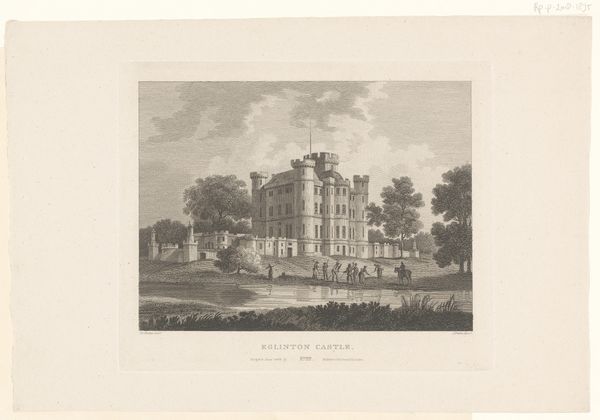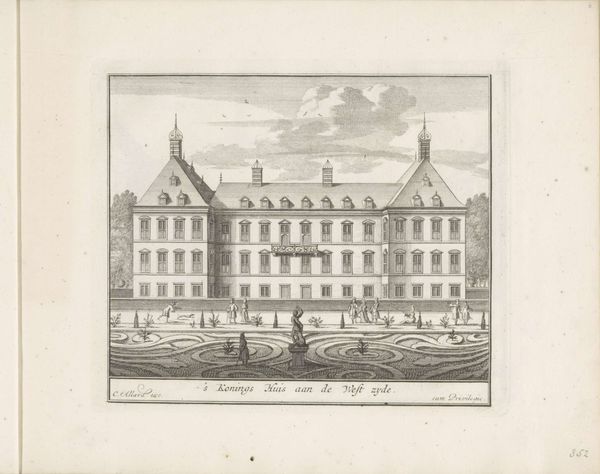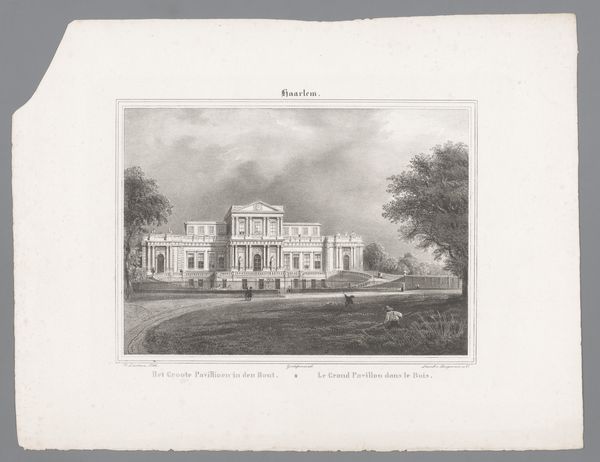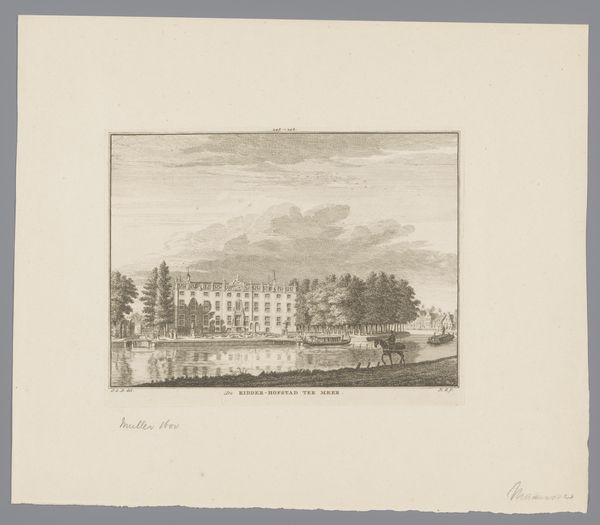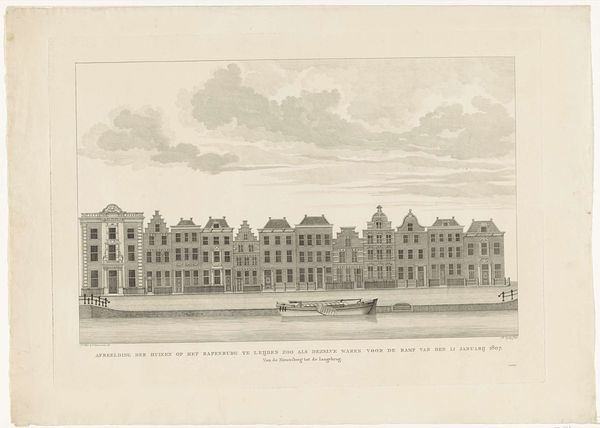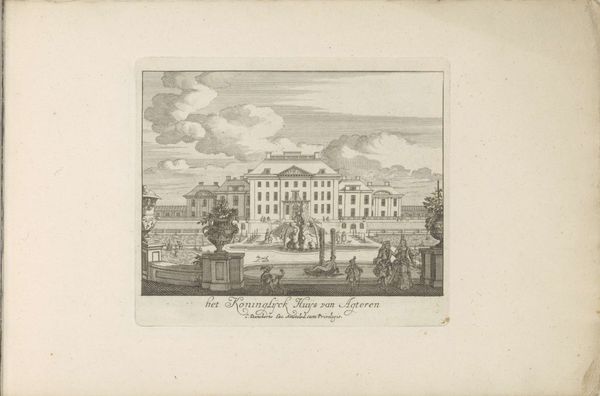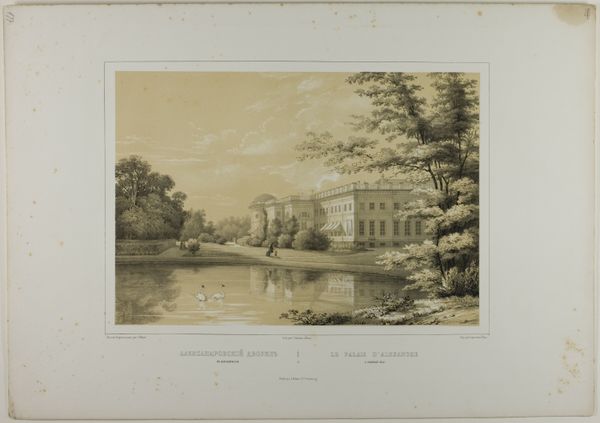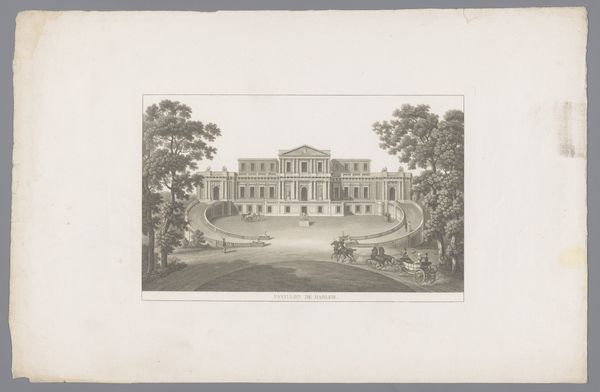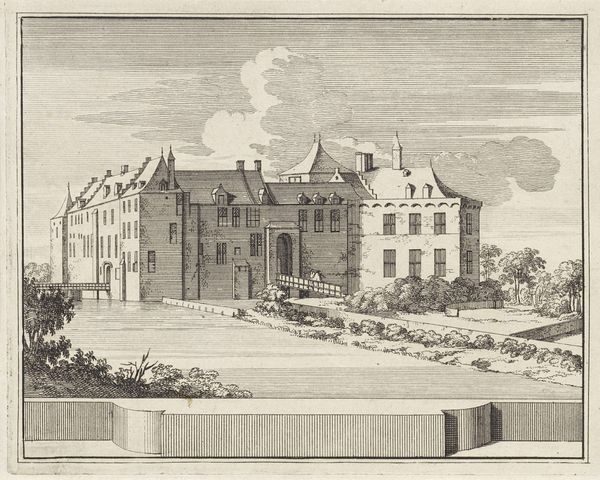
print, etching, engraving, architecture
# print
#
etching
#
old engraving style
#
landscape
#
etching
#
romanticism
#
cityscape
#
engraving
#
architecture
Dimensions: height 271 mm, width 359 mm
Copyright: Rijks Museum: Open Domain
Editor: We're looking at "Koninklijk Paleis in Amsterdam vanaf de westzijde gezien," an etching and engraving made sometime between 1826 and 1839 by J.B. Clermans. It's got this lovely, almost dreamy quality. It feels a little bit like stepping back in time, wouldn't you say? What leaps out at you when you look at this print? Curator: Well, it whispers tales of Amsterdam’s evolving identity, doesn't it? It makes me ponder what it truly means to capture a place. Clermans wasn't just etching stone and mortar; he was giving permanence to a fleeting moment in time. Don't you find that prints offer such a unique opportunity to immortalize a perspective? What does this cityscape evoke in you? Editor: That’s beautifully put. It makes me wonder about the daily lives of people who lived around the palace back then. Were they aware that they were witnessing history in the making? Curator: Precisely! Look at the small figures dotted along the foreground – almost like ants bustling about their day. And the carriage, a signifier of progress and wealth in the 19th century. These are intentional juxtapositions to remind us of the ever-changing flow of life against the backdrop of enduring architecture. Does the palace seem imposing, or is it softened by the quotidian life unfolding around it? Editor: I think softened – the details make it human-scaled. Seeing this has shifted how I see historical cityscapes. It’s not just about grand buildings but about capturing the pulse of everyday life. Curator: Indeed. It reminds us that art, much like a city, is a living, breathing narrative, ever open to interpretation and re-evaluation. It’s fascinating how much we can read in a simple scene.
Comments
No comments
Be the first to comment and join the conversation on the ultimate creative platform.
